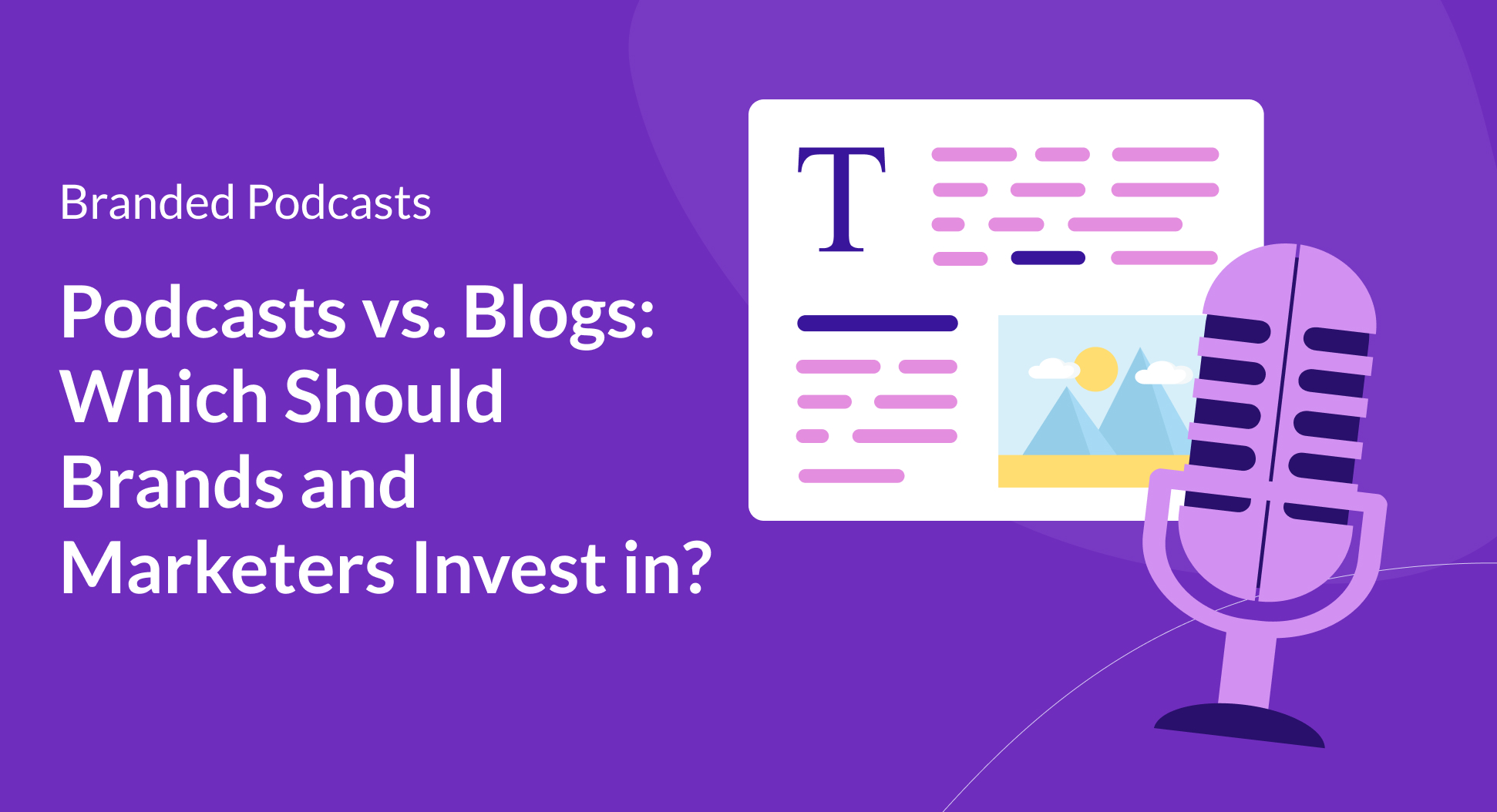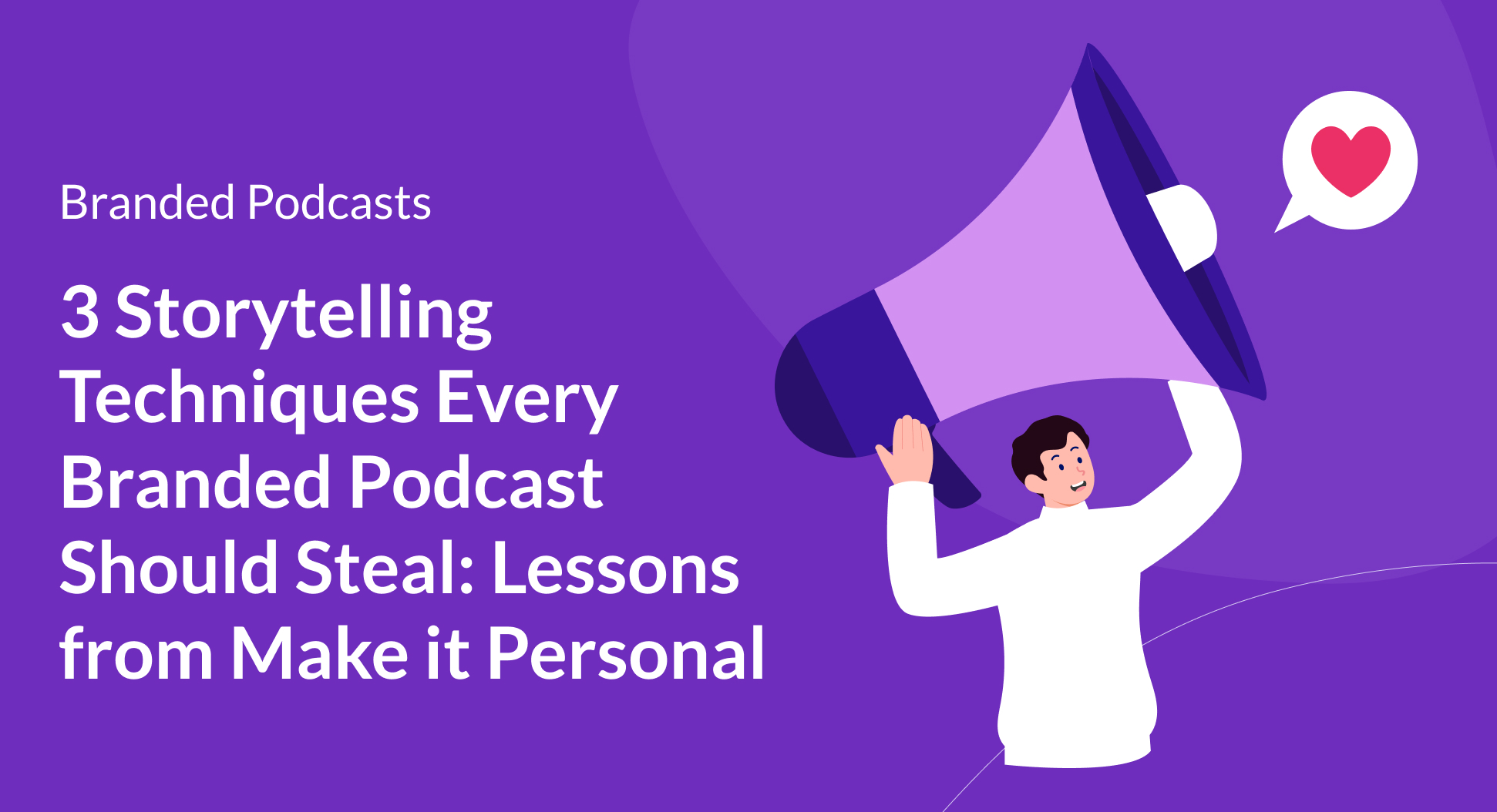Contents
As a producer at Quill, I’m often asked: Does my branded podcast need a landing page?
The answer: YES!
Nowadays, a podcast's success extends beyond just the quality of its content – it's also about how effectively you market and present it. A well-crafted landing page can be your podcast's digital storefront, a place to convert potential listeners into subscribers.
In this blog, I’ll break down what makes a great branded podcast landing page, why you need one, and some considerations that I’ve learned along the way as a producer working with global brands.
Do I need a podcast landing page?
A landing page is a place for all things related to your podcast to live.
It’s the central place where listeners can find how to listen to your show, resources you’ve mentioned in an episode, and supporting content like blogs, infographics, and other materials.
Your podcast landing page will assist in accessibility, visibility, and reach. And one of the most powerful tactics to get your site in front of the right audience is through none other than SEO.
Increasing podcast SEO
Seasoned marketers are familiar with the power of SEO (search engine optimization) to boost discoverability, and podcast SEO is one of the key reasons your podcast needs a landing page.
Here are a few ways to improve SEO on your podcast landing page:
- Upload episode transcripts: I’ve often seen companies upload transcriptions in a downloadable, PDF format. But search engines don’t track text on PDFs, so to get all that SEO goodness, publish your transcript directly on the landing page. Similar to how blogs are formatted, have the transcript be a clickable element on the landing page which will take a visitor to its own dedicated page. 99% Invisible and does a great job of this.
- Blogs: Every podcast episode is a goldmine of material. Repurposing podcast episodes into short Q&As, recap blogs, or writing content to support a topic or theme for the episode is a fantastic way to transform your show and boost reach. Here is a great example from Fissionary.
- Titles and descriptions: When writing episode titles and descriptions, keep your podcast and brand keywords in mind. These titles and descriptions will live on your landing page and assist with discoverability on search engines and listening apps.
Beyond SEO, there are several benefits to having a podcast landing page. Here are a few:
- Position your brand as a thought leader: A driving reason many brands create a podcast is to position themselves as thought leaders. A polished landing page shows that your podcast is professional, authoritative, and adds to perceived legitimacy.
- Guest sourcing: When sourcing guests for your podcast, being able to direct them to a landing page helps secure guests. I’m often asked by prospective guests for confirmation that a podcast is affiliated with a particular brand. So from first-hand experience, I can say that it boosts the show's credibility and may encourage a guest to say yes.
An internal podcast landing page or an external podcast website?
Now let’s ask the tough questions:
Should your brand create a landing page internally within your existing website or should it create a separate, external website just for the podcast?
9 times out of 10 you’ll find myself and the rest of the Quill team recommending an internal landing page on your existing brand’s website in almost every case.
That one time that we don’t recommend this might be because your branded podcast already has a large following or you are constrained by strict rules on your brand's website. But in all other cases, you should have the podcast should live with your other content.
Your branded podcast landing page should live on your internal site
For most brands, especially those who have just launched a podcast, we recommended an internal landing page. Here are a few benefits of this strategy:
- Bounce rate: Internal pages ensure you can easily link to the podcast from related blogs or press releases, and point listeners in the direction of your other resources directly from your landing page without having them leave your site
- Accessibility: If your landing page is internal, you can ensure it will follow the accessibility requirements of the rest of your site, ensuring listeners with accessibility concerns can access your content.
- Discoverability: If your landing page is attached to your site, you reap all the discoverability benefits, like SEO and any paid ads, of your brand's website in helping listeners find your website and don’t need to fight to appear on the first page of Google.
Exploring which option fits best for your brand
While there are pros and cons to each, here are a few things to keep in mind when deciding whether an internal landing page or external podcast website is the best fit for your brand and the show:
- Resourcing: If the podcast is going to have its own website, who will be responsible for its upkeep? If there is not a clear plan for its maintenance, it can quickly become outdated, containing old branding or language… and yes, your audience can tell. If it's going to have its own website, the resources must be available to keep it up, even after the show has launched.
- Discoverability: It’s easier to point listeners toward www.yourbrand.com/podcast than a separate domain. However, if your podcast lives on your brand's site, it needs to be easy to find. Brands will often bury podcasts on hard-to-find landing pages or in a sea of links in the footer. As you can assume, this doesn’t do your discoverability any favors.
- Branding: Having your podcast live on your company’s existing site makes it easier for you to ensure it meets brand guidelines. However, if your company has strict rules about linking out to listening platforms or other resources, consider having the podcast on its own website. Legitimacy: If you decide an external landing page is the best option for your needs and goals, ensure that it is clear to anyone who comes to the site that the podcast is affiliated with your brand and that it meets the same standards as your main site. It’s still a representation of your brand, and needs to look like it!
Producer Tip: if you’re interested in learning more benefits of a podcast website, check out our comprehensive guide.
What should the landing page look like?
So we’ve convinced you that you need a landing page… but what should it look like?
If you’re coming from a marketing background, you likely know the elements that make up a successful landing page like headers, clear and concise copy, relevant branding, imagery, natural flow, bright CTAs, etc.
So I won’t waste any of our time covering what we all already know. Instead, let’s focus on the elements that you can add to your podcast landing page that you might not be familiar with:
- Embedded media player: Hosting platforms like Apple Podcasts, Spotify and CoHost provide website embed codes so that people can listen to your podcast directly on your website. It’s a great way to get people interested and makes it easier for them to access the show (and therefore more likely to listen).
- Guest submission: If your podcast is interview-based, your website can be the place where potential guests can submit themselves for consideration. Include guidelines on who you are looking for and what they need to provide to be considered.
- Episode Library. Put all your past episodes in one easy-to-find place! This can also include any supplementary content, like videos or social media posts, associated with the episodes.
The importance of goal setting
When creating any landing page or website around your podcast, it's important to understand the goals of your show.
Deciding if your landing page will be internal or external, what resources it will include, and what the UI will look like are all dependent on the goal of your show.
Here are some examples of potential podcast goals and how they would change an approach to a landing page:
- Driving listeners to your website: If the goal of your podcast is to get listeners to go to your website, your landing page should be internal and linked to internal pages, like blogs, transcriptions, or supporting videos, to keep listeners on the site.
- Boosting readership on newsletters and blogs: Having an internal landing page is your best bet if you want to drive traffic to a company newsletter or other blogs on your site. It makes it easier for your marketing team to drive newsletter subscriptions, blog readership, and podcast listens, all in one place.
- Creating an engaged and loyal listener base: If your podcast goals are more centered on building an audience for the podcast itself and you don’t want the branded nature of the show to be at the forefront, an external landing page might be a good option. You can build a central place where listeners can find past episodes, transcripts, and everything else about your show. However, if your show is just getting off the ground, I still recommend starting with an internal page to take advantage of SEO and increase credibility.
Producer tip: Your podcast is not an infomercial. While having people enter your sales funnel can certainly be a goal of the show, it shouldn't be the only one! Branded podcasts are a powerful medium to drive reach, improve brand perception, and connect with new and existing audiences, use this to your advantage.
Examples of successful podcast landing pages
You also want to ensure that your landing page is cohesive with the rest of your content. Here are some examples of effective podcast landing pages that inspire:
Expedia Powering Travel
Type: Internal Landing Page

Why we love it:
Short, sweet, and on-brand, Expedia Group’s landing page lets you know exactly what you’re in for. Bonus points for easy access to Apple Podcasts and Spotify!
Amdocs the Great Indoors
Type: Internal Landing Page

Why we love it:
Amdocs does a great job of highlighting the show's latest episodes, with each episode having its own landing page with short quotes from the guests. Highlighting guests like this can also encourage them to share the show with their networks.
Charles Schwabs’ Choiceology
Type: Internal Landing Page

Why we love it:
This internal landing page provides recommended readings to learn more about the episode's insights. This is a great way to keep listeners engaged and integrate your podcast into your content ecosystem.
Red Hat’s Command Line Heroes
Type: External Landing Page

Why we love it:
Currently in its ninth season, Command Line Heroes has cultivated a following and aesthetic separate from Red Hat, which is why this external landing page works well for them. The show is clearly still a Red Hat production but has its own image separate from the brand.
Landing pages and websites for your branded podcast
Remember, to create a stellar landing page for your podcast, you need to understand your goals, have the right resources to put towards it, and leverage your podcast's SEO potential.
Consider your landing page approach before you go live so that it’s not a rushed decision once the podcast is available on listening apps. It should be an important part of your launch strategy!
Your landing page is your podcast’s home and representation on the internet, so make sure you’re taking full advantage of it and strategizing on how to make it work best for your brand.
If you’re interested in learning more about creating a podcast landing page that stands out, reach out to our team!


.avif)



.png)

.png)




.png)
.png)
.png)
.png)